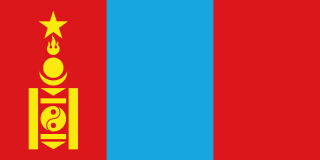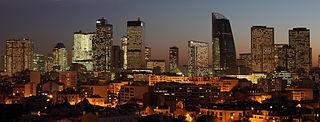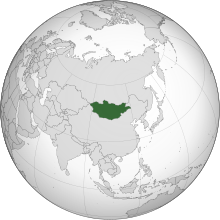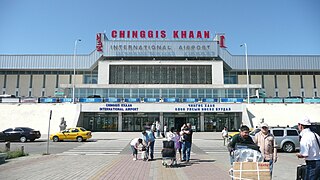
Mongolia is a landlocked country in East Asia, bordered by Russia to the north and China to the south. It covers an area of 1,564,116 square kilometres, with a population of just 3.3 million, making it the world's most sparsely populated sovereign nation. Mongolia is the world's largest landlocked country that does not border a closed sea, and much of its area is covered by grassy steppe, with mountains to the north and west and the Gobi Desert to the south. Ulaanbaatar, the capital and largest city, is home to roughly half of the country's population.

The economy of Mongolia has traditionally been based on agriculture and livestock. Mongolia also has extensive mineral deposits: copper, coal, molybdenum, tin, tungsten, and gold account for a large part of industrial production. Soviet assistance, at its height one-third of Gross domestic product (GDP), disappeared almost overnight in 1990–91, in the time of the collapse of the Soviet Union. Mongolia was driven into deep recession.

The economy of the Philippines is the world's 32nd largest economy by nominal GDP according to the International Monetary Fund 2021 and the 12th largest economy in Asia, and the 3rd largest economy in the ASEAN after Indonesia and Thailand. The Philippines is one of the fastest-growing emerging markets, and the 3rd highest economy in Southeast Asia by nominal GDP, following Thailand and Indonesia.

Ulaanbaatar, previously anglicized as Ulan Bator, is the capital and most populous city of Mongolia. It is the coldest capital city in the world, on average. The municipality is located in north central Mongolia at an elevation of about 1,300 metres (4,300 ft) in a valley on the Tuul River. The city was originally founded in 1639 as a nomadic Buddhist monastic center, changing location 28 times, and was permanently settled at its current location in 1778.

The Mongolian People's Republic was a socialist state which existed from 1924 to 1992, located in the historical region of Outer Mongolia in East Asia. It was ruled by the Mongolian People's Revolutionary Party and maintained close links with the Soviet Union throughout its history.

The economy of Europe comprises about 748 million people in 50 countries. The formation of the European Union (EU) and in 1999 the introduction of a unified currency, the Euro, brought participating European countries closer through the convenience of a shared currency and has led to a stronger European cash flow. It is important to note that the European Union is not a country, rather a unique global organisation, as an entity forming one of the largest economies in the world. The European Union also “regulates” the global market by the Single Market. The difference in wealth across Europe can be seen roughly in former Cold War divide, with some countries breaching the divide. Whilst most European states have a GDP per capita higher than the world's average and are very highly developed, some European economies, despite their position over the world's average in the Human Development Index, are poorer. Europe has total banking assets of more than $50 trillion and its Global assets under management has more than $20 trillion.
The economy of Asia comprises more than 4.5 billion people living in 49 different nations. Asia is the fastest growing economic region, as well as the largest continental economy by both GDP Nominal and PPP in the world. Moreover, Asia is the site of some of the world's longest modern economic booms, starting from the Japanese economic miracle (1950–1990), Miracle on the Han River (1961–1996) in South Korea, economic boom (1978–2013) in China, Tiger Cub Economies (1990–present) in Indonesia, Malaysia, Thailand, Philippines, and Vietnam, and economic boom in India (1991–present).

The economy of India has transitioned from a mixed planned economy to a mixed middle-income developing social market economy with notable state participation in strategic sectors. It is the world's fifth-largest economy by nominal GDP and the third-largest by purchasing power parity (PPP). According to the International Monetary Fund (IMF), on a per capita income basis, India ranked 142nd by GDP (nominal) and 125th by GDP (PPP). From independence in 1947 until 1991, successive governments followed Soviet style planned economy and promoted protectionist economic policies, with extensive state intervention and economic regulation. This is characterised as dirigism, in the form of the License Raj. The end of the Cold War and an acute balance of payments crisis in 1991 led to the adoption of a broad economic liberalisation in India. Since the start of the 21st century, annual average GDP growth has been 6% to 7%, and from 2013 to 2018, India was the world's fastest growing major economy, surpassing China. Economy of the Indian subcontinent was the largest in the world for most of the recorded history up until the onset of colonialism in early 19th century. Share of Indian economy is 7.5% of world economy by PPP terms.
When Deng Xiaoping took over as the paramount leader of the People's Republic of China (PRC), he presented himself as a pragmatic contrast to his predecessor Mao, who was more of a theorist and an ideologist. Deng's main goal was to lift people out of poverty and significantly improve the lives of ordinary Chinese people. In justifying opening up and the series of economic reforms that ensued, Deng referred to Marx and his theories, which predicted that nations need to undergo urbanization and a stage of capitalism for a natural socialist transition. One of the most renowned reforms under Deng was establishing four "special economic zones" along the Southeastern coast of China, with Shenzhen, Shantou, and Zhuhai located in Guangdong province and Xiamen located in Fujian province. Special economic zones (SEZs) in mainland China are granted more free market-oriented economic policies and flexible governmental measures by the government of China, compared to the planned economy elsewhere. This allows SEZs to utilize economic management which is more attractive to foreign and domestic businesses. In SEZs, "...foreign and domestic trade and investment are conducted without the authorization of the Chinese central government in Beijing" with "tax and business incentives to attract foreign investment and technology".Trade was originally controlled by China's centralized government. However, these special zones are where market-driven capitalist polices are implemented to entice foreign investments in China. In 1986, China then added 14 additional cities to the list of special economic zones.

The following outline is provided as an overview of and topical guide to Mongolia:

The following outline is provided as an overview of and topical guide to China:

The Republic of Buryatia is a federal subject of Russia which, according to the IMF, was an emerging economy in 2011.











